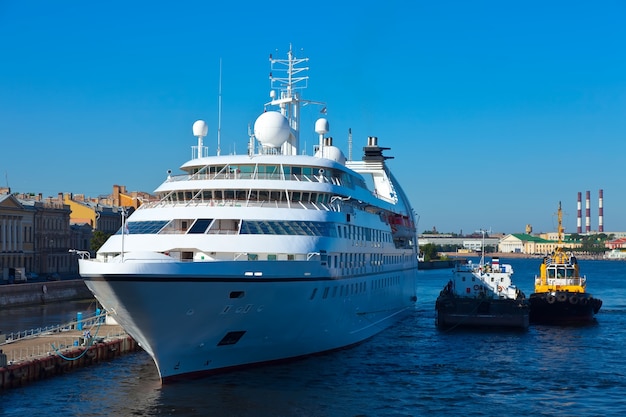What is Maritime Communication?
Maritime communication plays a vital role in the operation and safety of ships and vessels at sea. It encompasses various forms of communication used by maritime professionals, including ship-to-ship communication, ship-to-shore communication, and communication between vessels and shore-based authorities. Effective maritime communication is essential for ensuring the smooth flow of information, coordinating activities, and maintaining situational awareness in the maritime domain.
The Importance of Maritime Communication
Maritime communication serves as a critical link between ships, authorities, and other stakeholders involved in maritime operations. It facilitates the exchange of essential information, such as navigational warnings, weather updates, distress signals, and operational instructions. The ability to communicate effectively is particularly crucial in emergency situations, where prompt communication can save lives and prevent disasters.
Effective maritime communication ensures:
- Safety at Sea: Proper communication enables the dissemination of relevant safety information, including navigational hazards, piracy threats, and search and rescue operations. It allows ships to stay informed about potential risks and take necessary precautions.
- Efficient Operations: Communication between vessels and shore-based authorities facilitates efficient coordination of activities, such as port entry and departure procedures, pilotage services, and cargo handling. Smooth communication helps reduce delays, improve logistical planning, and optimize overall operational efficiency.
- Compliance with Regulations: Maritime communication ensures compliance with international regulations, such as the International Convention for the Safety of Life at Sea (SOLAS) and the Global Maritime Distress and Safety System (GMDSS). These regulations mandate specific communication equipment and procedures to enhance safety and security at sea.
- Emergency Response: In emergency situations, effective communication is crucial for coordinating search and rescue operations, notifying nearby vessels of distress situations, and providing assistance to those in need. Clear and concise communication plays a critical role in mitigating the impact of maritime emergencies.
Methods of Maritime Communication
Maritime communication relies on a variety of methods and technologies, depending on the nature of the communication and the distance involved. Some common methods of maritime communication include:
- VHF Radio: Very High-Frequency (VHF) radio is widely used for ship-to-ship and ship-to-shore communication within a limited range. It allows for real-time voice communication and is commonly used for routine navigational exchanges, collision avoidance, and port operations.
- Satellite Communication: Satellite communication systems enable long-range communication and are essential for vessels operating in remote areas or beyond the reach of terrestrial networks. Satellite phones, email, and data transfer services provide reliable connectivity even in the most challenging maritime environments.
- AIS: The Automatic Identification System (AIS) is an automatic tracking system that uses VHF transponders to exchange vessel information, including identity, position, course, and speed. AIS enhances situational awareness and helps prevent collisions by allowing vessels to track nearby traffic and share relevant data.
- EPIRB and PLB: Emergency Position Indicating Radio Beacons (EPIRBs) and Personal Locator Beacons (PLBs) are distress beacons that transmit signals to satellite systems when activated. These devices play a crucial role in emergency situations, enabling rapid identification and rescue of individuals in distress.
Challenges in Maritime Communication
Despite advances in technology, maritime communication still faces several challenges that can impact its effectiveness. Some of these challenges include:
- Language Barriers: The diverse nature of international shipping often leads to language barriers among crew members and shore-based authorities. Miscommunication or misunderstandings due to language differences can hinder effective communication and compromise safety.
- Radio Interference: Radio frequency interference from various sources, such as other vessels, land-based transmission stations, or natural phenomena, can disrupt radio communication. This interference can cause distortion or loss of critical information, affecting the reliability and clarity of communication.
- Technological Limitations: While technological advancements have improved maritime communication, certain areas may still lack reliable connectivity. Remote regions and areas with limited satellite coverage pose challenges for seamless communication, potentially leaving vessels without real-time support.
- Human Factors: Fatigue, stress, and human error can all affect the quality of maritime communication. In high-pressure situations, crew members may fail to communicate effectively, leading to misunderstandings or delayed response times.
“Clear and effective communication is the cornerstone of safe and efficient maritime operations. It ensures that crucial information reaches the right individuals at the right time, minimizing potential risks and maximizing operational performance.” – Maritime Expert
Conclusion
Maritime communication is a vital aspect of safe and efficient operations at sea. It enables the exchange of critical information, facilitates coordination, and ensures compliance with international regulations. Effective communication enhances safety, improves efficiency, and plays a crucial role in emergency situations. Despite challenges posed by language barriers, radio interference, and technological limitations, ongoing advancements continue to enhance maritime communication and promote better connectivity in the maritime industry.



